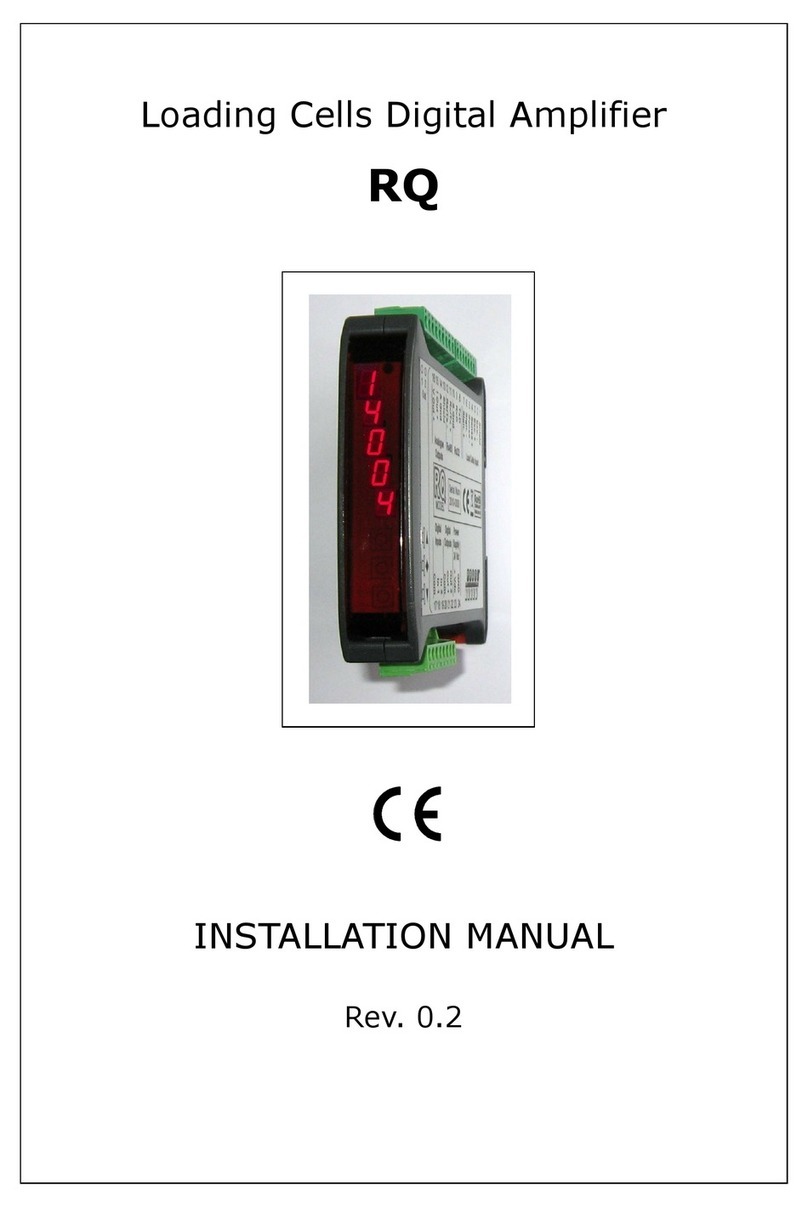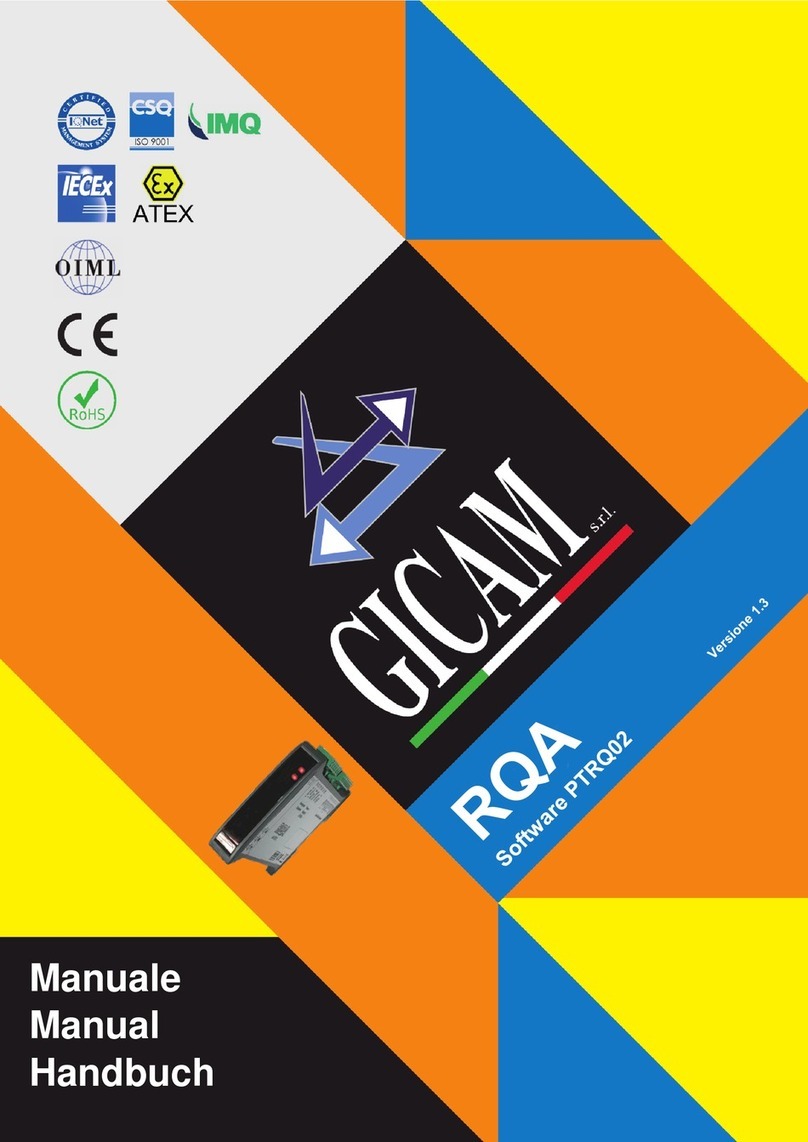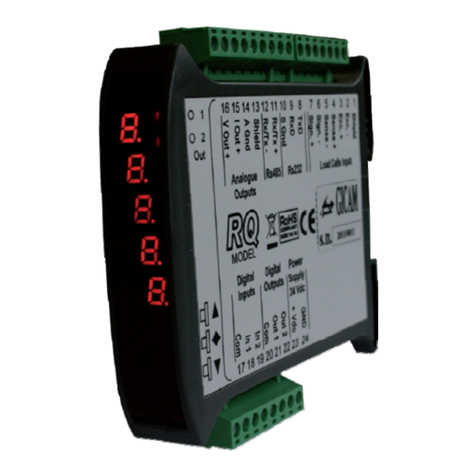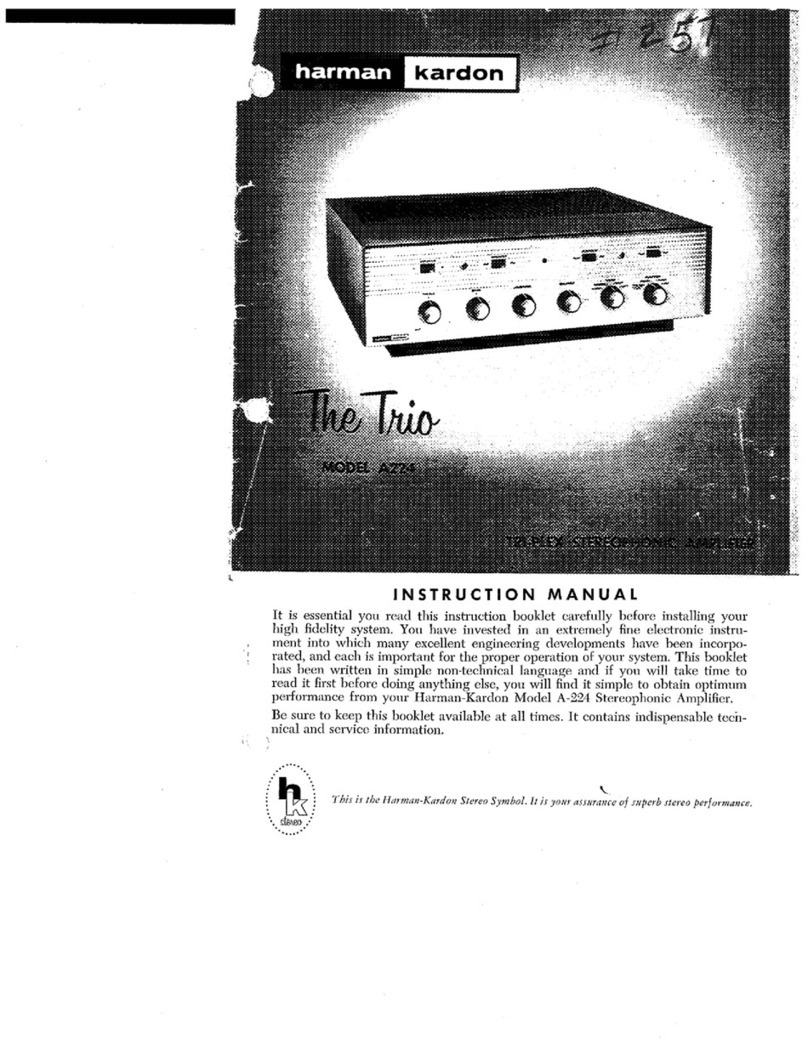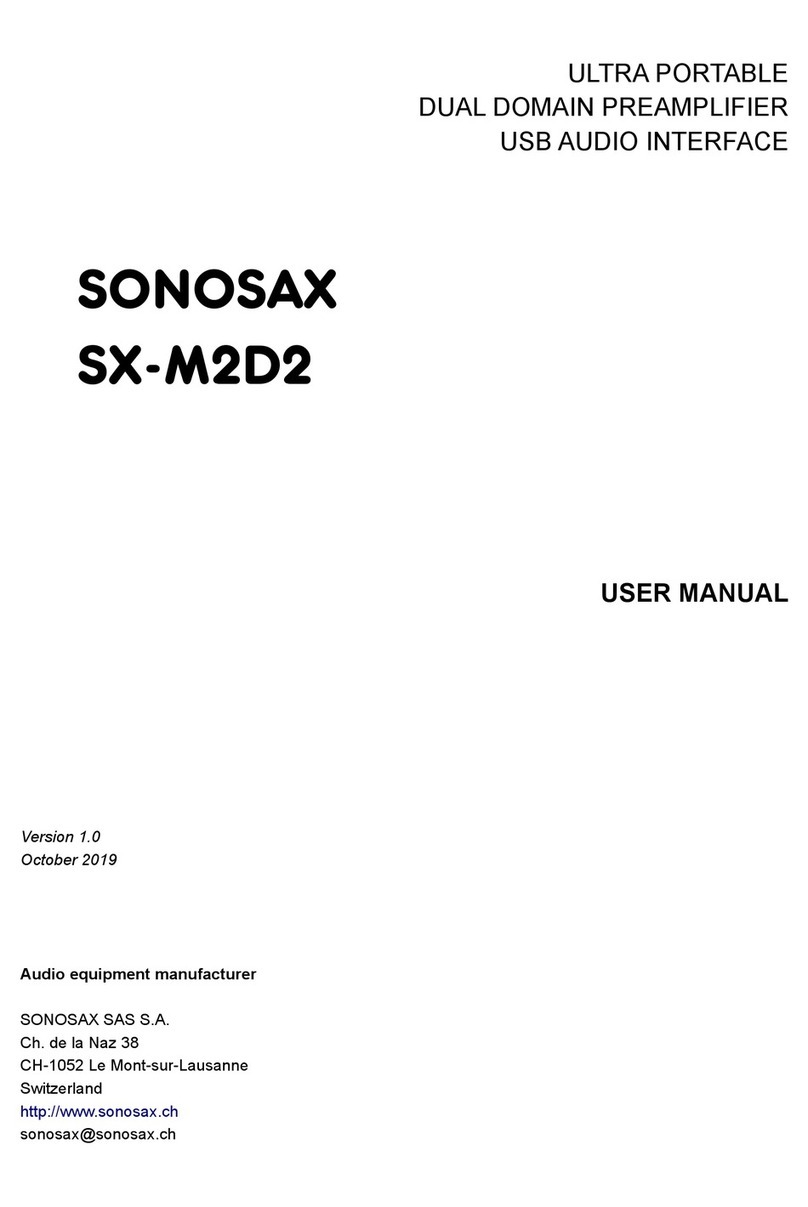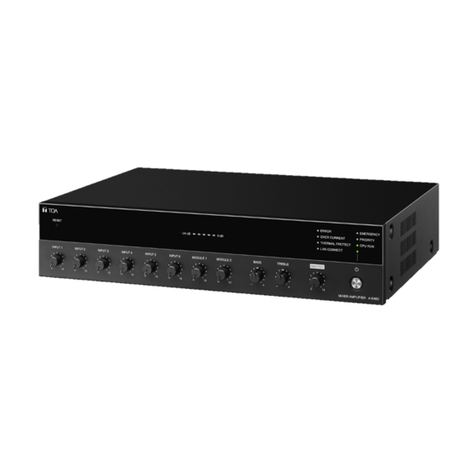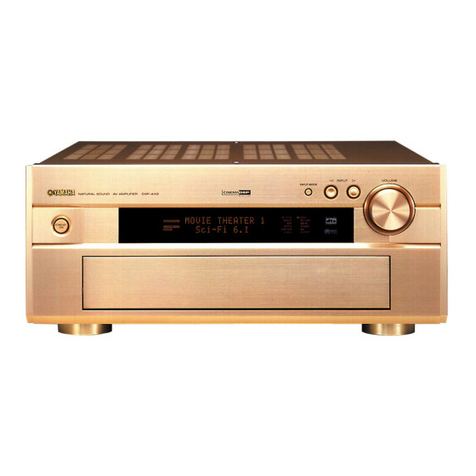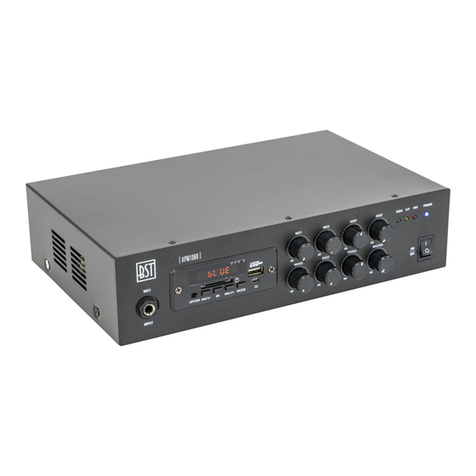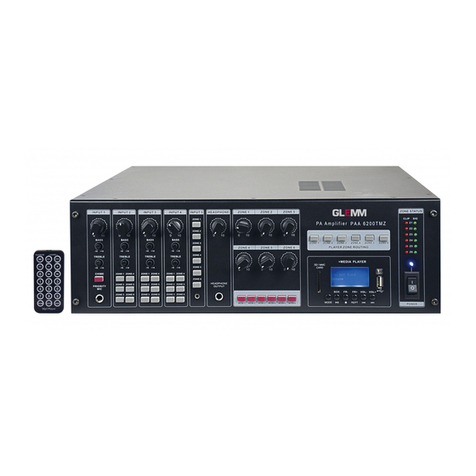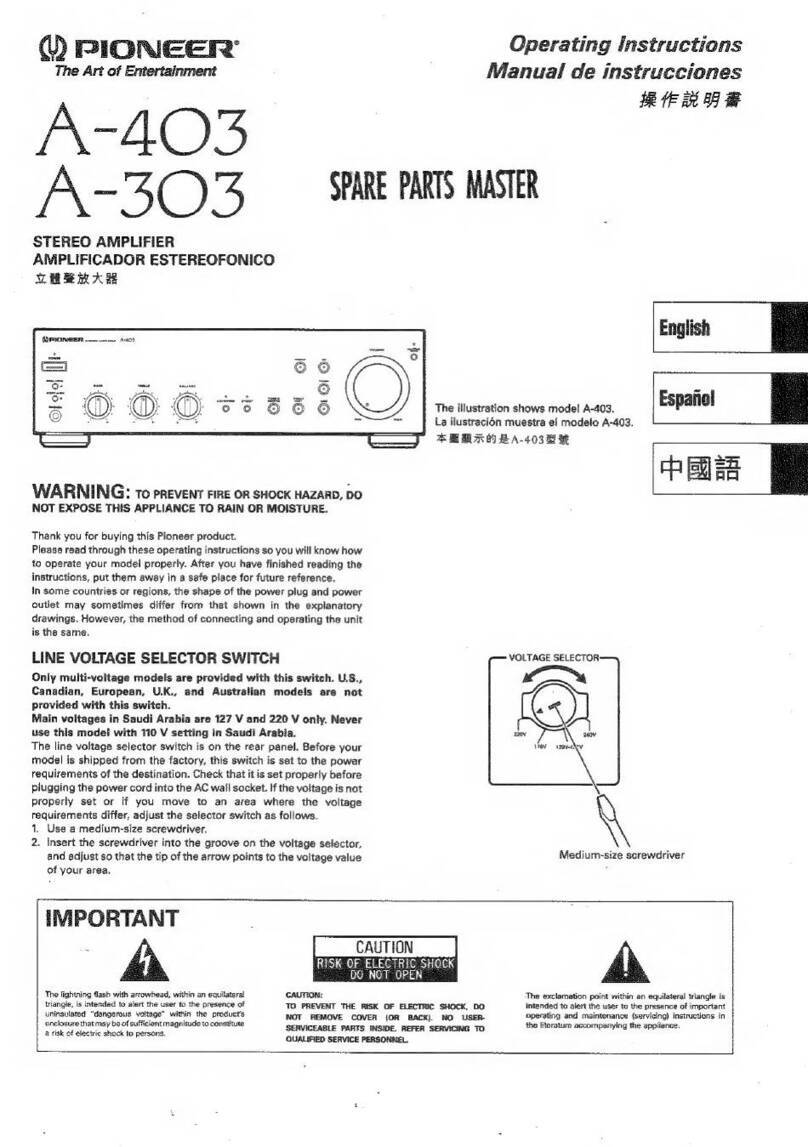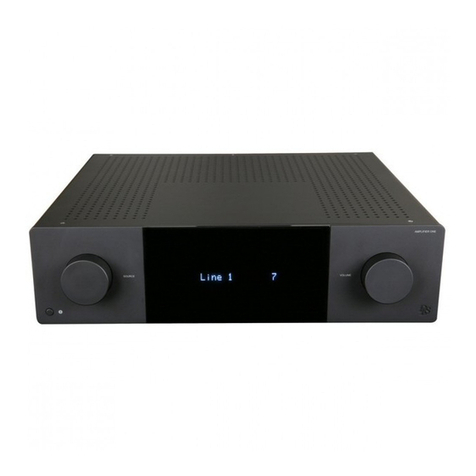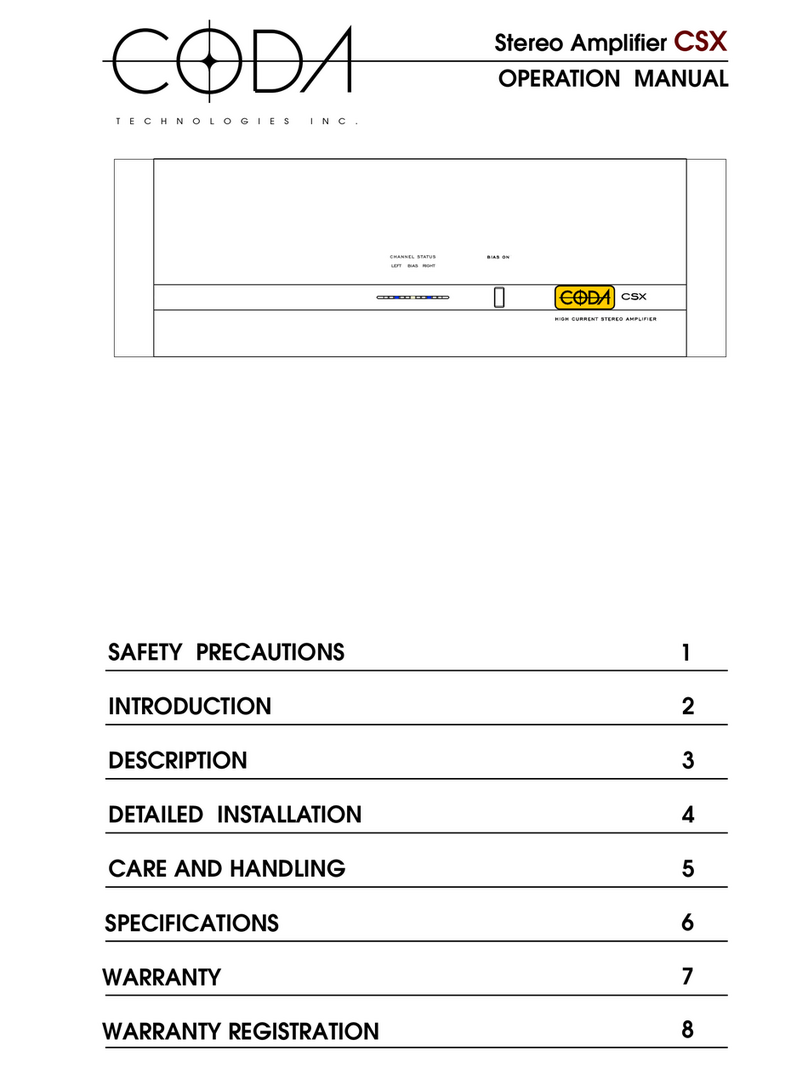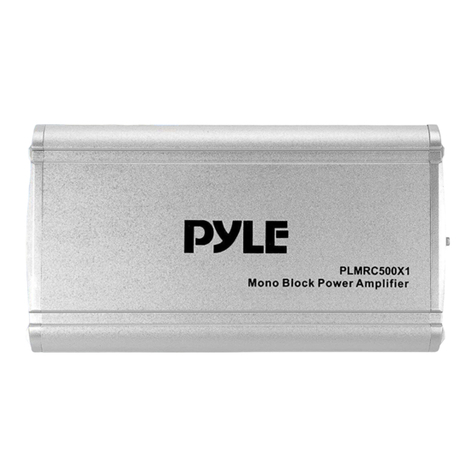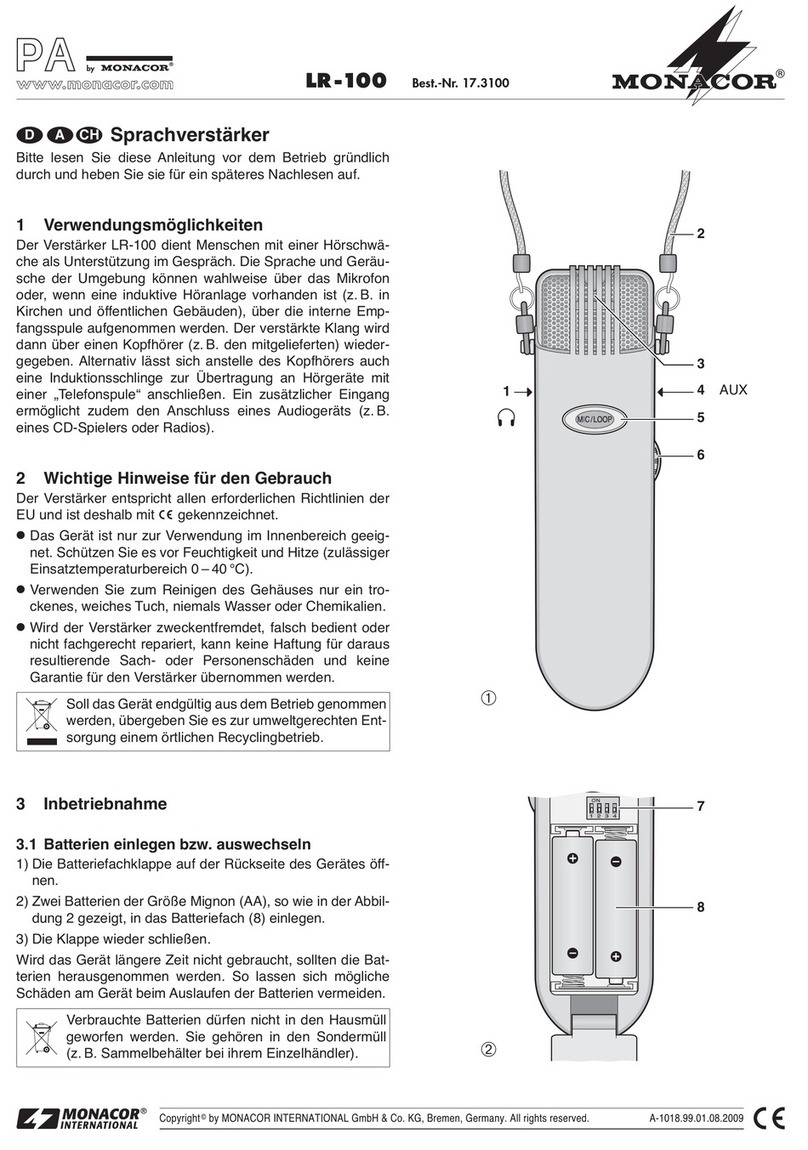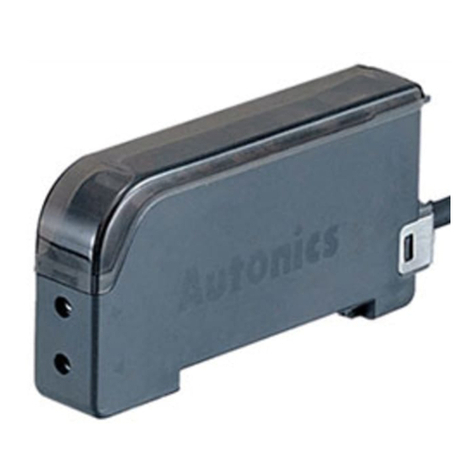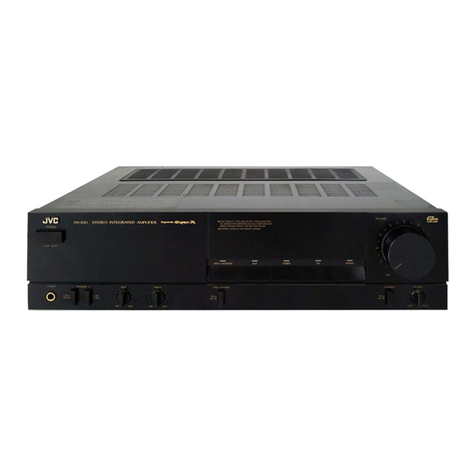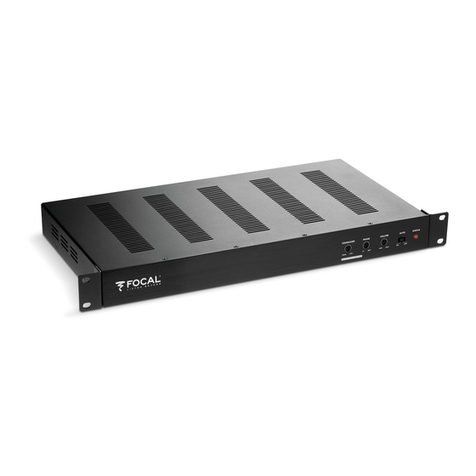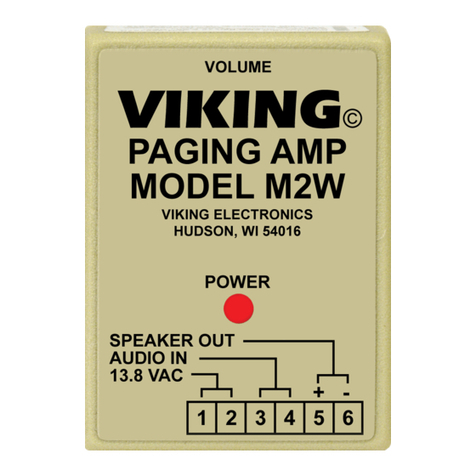Gicam RQ User manual

LOADING CELLS DIGITAL AMPLIFIER
RQ
OPERATIONAL HANDBOOK
SOFTWARE CODE: PTRQ01
VERSION: Rev.0.1

PROPERTIES AND DISPLAY
MAIN USAGE PROPERTIES Pag. 2
MAIN DISPLAY Pag. 2
DISPLAY INDICATORS Pag. 2 - 3
DATA PROGRAMMING
KEYBOARD Pag. 3
FUNCTION KEY Pag. 3
OPERATING MODE Pag. 3
WEIGHT VIEW AND RESET AND ANALOG OUTPUT ADJUSTMENT Pag. 4
CONFIGURATION MENU Pag. 5 - 6 - 7
WEIGHT CALIBRATION Pag. 8
LOGIC OUTPUT Pag. 9
ANALOG OUTPUT Pag. 10
SERIAL PROTOCOL Pag. 11-12
PROBLEM SOLUTION Pag. 13
INDEX
RQ device operational handbook Pag. 1

MAIN USAGE PROPERTIES
Main operational characteristics are:
Weight value visualization from linked loading cells;
2 analog output administration: one in Volt and another in mA;
Value view of the Volt analog output;
2 logical output administration;
1 logical input administration;
RS232 connection capability for serial data transmission (ongoing or on request);
RS485 connection capability for serial data transmission (ongoing or on request);
Instead of RS485 serial port it is possible to connect a PROFIBUS module for serial data transmission.
RQ device operational handbook
Pag. 2
DISPLAY
On the 5-digit display the lower positioned digit stand for the less meaningful. Starting the device, the value
appearing is the analog output in Volts or the gross weight depending on the parameter “VISUA” setup (see
pag.5). It is also possible to change the view (weight/analog output or viceversa)pressing the 2 superior but-
tons; when onscreen the weight value is going to keep blinking to help the operator to discern the value (see
pag. 4). Also the parameters used during configuration ad calibration setup or messages regarding the type
of job will be shown on screen.
LED SIGNALS
Over the display 2 led signals are inserted:
LED 1 Logical output 1 state (on = online, off = offline)
LED 2 Logical output 2 state (on = online, off = offline)
MAIN DISPLAY
DISPLAY INDICATORS
During the device starting sequence, the display test routine is commenced, then the software
version and ID code is moved to screen. When requesting support these codes may be asked
for problem solving purposes.
P
R
Q
0
R
E
J
0
2
When not in programming mode, the analog output value in Volt is shown on screen or the weight in kg. In
some instances you will find these messages:
OVERLOAD SIGNAL
When the gross weight on the scale abounds the maximum weight allowance by 9 divi-
sions, this signal is shown on display.
No weight signal.
O
-
L

DISPLAY INDICATORS (continue)
RQ device operational handbook Pag. 3
UNDERLOAD SIGNAL
When the gross weight on te scale is minor than –9999 this signal appears on display.
The device will be programmed and managed via a 3-key keyboard.
Usually, for the programming menu management the and controls are used to select the various op-
tions, the key is used to enter the sub menu or parameter and to confirm the value and return to previous
level. In the analog output menu you need to push both buttons together to return to main menu. During
parameter setup, is used to lower the number while the key to make it bigger, the is used to pass to
the next character. When confirming the last, the set value is saved and you return to previous menu.
KEYBOARD
KEY FUNCTION
(Long pressure) in analog output viewing, sets up the desired value of analog output that
needs to be obtained with the weight present on scale. Weight calibration is modified.
(Long pressure) Commence Zero Calibration (only if shifted from 0 less than 10% of the
tolerance).
(Pressed together) Main menu
(Pressed together) change view weight/analog output
KEY FUNCTIONS
OPERATING MODE
DATA SETUP
Up the blinking character
Following char selection
0
4
2
If the blinking char is the last down, pressing the
key is going to save the value and goes back to
main menu.
Down the blinking character
NO CALIBRATION
Blinking message that signal that the weight was not calibrated. Until a calibration pro-
cedure is executed neither the serial ports nor the analog port will be managed.
N
O
C
A
L

RQ device operational handbook
Pag. 4
WEIGHT VIEW AND RESET AND ANALOG OUTPUT ADJUSTMENT
This procedure is used for set the zero on the scale.
The reset command cannot be executed under these conditions:
Unstable weight.
Gross weight higher or lower of the 10% of the maximum load (depending on the original zero calibra-
tion). If this is the case, you have to access calibration menu and execute calibration.
The weight reset is saved when the device is turned off.
During the startup sequence, the analog output value or the gross weight is shown on the display, depen-
ding on the “VISUA” parameter (pag.5).
CHANGING VIEWING BETWEEN ANALOG OUTPUT AND GROSS WEIGHT
RESETTING ZERO (reset weight)
Zero calibration INPUT 1
To change the view from analog output value to gross weight push and together. The value shown
will blink if the gross weight is on.
4
2
G. weight blinking
2.
3
Analog Output with 2 decimals
(3 seconds)
ANALOG OUTPUT VALUE MODIFICATION:
By keeping the key or the key pressed for 3 seconds when you are viewing the analog output, you
gain access to the modification of the analog output value; on the display the value start to grow or shrink
depending on the key pressed. Once the destre value has been reached leave the key and after 1,5 se-
conds there will be a blinking on the display, the value will be assigned to the analog output, weight will
be modified and you are going to exit from the procedure.
The analog output value and weight can be modified within 10% of the maximum load; on reaching of the
maximum value “MAX “ will appear on display, with the minimum value “ MIN”.
EXAMPLE:
With a 3,00 Volt analog output, the value shown on display will be 3.00.
By pressing after 3 seconds you can see in the display the value growing from 3.01 to 3.02, 3.03 and so
on…. While the analog output will remain to 3.00 Volt. When the destre value is reached (i.e. 3,15 V) the
control can be released. After 1,5 sec. you’ll see the display blinking and the value will be modified and
so the weight.
This modification is limited to the 10% of the maximum load so, in this scenario, the value will change
from 3.30 (maximum) to 2.70 (minimum) starting from 3.00. Once the maximum value is reached the si-
gnal “MAX “ to make the operator understand that any further change is not possible (the same will hap-
pen for the lower limit, but in this case the message is “ MIN”).
To execute changes over the 10% limit a new calibration as to be done or the lower limit of the analog
output in the main menu has to be changed.
Analog output value and weight value correction
Open function and starts to
change characters on display
(3 seconds)
In analog output viewing
o

CONFIGURATION MENU
RQ device operational handbook Pag. 5
At the same time 0
0
0
If there is a password set, insert password
Else
P
A
S
S
C
A
P
A
C
S
E
N
S
D
1
V
1
C
A
L
1
B
F
1
L
T
S
T
A
B
A
V
T
-
0
0
-
T
R
C
M
-
O
V
T
O
V
T
1
O
V
T
2
1
S
T
R
B
A
V
D
1
B
A
V
D
2
A
D
D
R
C
O
M
1
C
O
M
2
A
N
-
1
A
N
-
2
…...
…...
PASS
PASSWORD
To set a password required to enter the menù. If pass = 0 no password will be asked. On
the other side if a password is required and entering the menu 0 is inserted, the menu will
be accessible only in view mode and no parameter can be changed.
CAPAC
SCALING SYSTEM MAXIMUM LOAD
Set the value corresponding to the sum of the maximum load for the cells, in kg. This is the
lower edge value for the scaling system. Values between 1 and 99999 kg (maximum viewa-
ble value) are accepted.
Following the change of this value a theoric weight calibration is executed. Default value =
1000.
SENS
LOADING CELLS’ ACCURACY
Set the value corresponding to the media of the accuracy regarding the maximum load of
the cells, in mV/V. Values between 0.5 and 4 mV/V are accepted. If no value has been set,
the default is 2mV/V.
Following this change the theoric weight calibration is executed.
D1V1S
DIVIDE VALUE
The divide value is in kg, varying from 0.001 kg to 50 kg.
The rate between system maximum load and the divide value is system resolution (division
number). Default = 1
Following this change, if maximum load is not changed, the weight calibration commence
automatically.
CAL1B CALIBRATION
See page 8.
J1SVA
DISPLAY VIEW AT START
With this parameter is chosen the data to show at device start up; you can choose between
ANALG (analog output in Volt) and GROSS (gross weight).
J
1
S
V
A

M-OUT
OUTPUT MODE
Set the mode of the output; choices ERR, ALLR o CAMP.
See page 9. Default ERR
OUT1
SETPOINT OUTPUT 1
Set the setpoint for output 1. The maximum value to set is like the load of the cells. Default
0.
OUT2
SETPOINT OUTPUT 2
Set the setpoint for output 2. The maximum value to set is like the load of the cells. Default
0.
1STR ISTERESI
Isteresi value regarding the set point. Default 0.
BAUD1
BAUD RATE COM1
Values: 9600 / 19200 / 38400/ 57600 / 115200 bit / sec.
Default = 9600
CONFIGURATION MENU (continue)
RQ device operational handbook
Pag. 6
0- TRC
ZERO FOLLOWING
The zero following function is an automatic zero calibration when the weight changes slightly
during time, by the parameter in the following table.
To block the function set the value to 0. The maximum load that is possible to turn to 0 is
2% of system load. Default = 0.
Zero following value Changes
0 No control
1 0.3 div / sec.
2 0.5 div / sec.
3 1 div / sec.
4 2 div / sec.
AVT-0
AUTOZERO AT STARTUP
This parameter is the maximum weight turned to zero at startup. Autozero function is the
execution of an automatic zero calibration during device startup, only if the weight is stable
in the desired interval. To block the process set the value to 0 (default).
STAB
WEIGHT STABILITY
A stable weight stands within an interval during a period of time. Default = 2.
Valore Variazione
0 Weight stable.
1 Stability determined in quick mode.
2 Stability determined with default parameters. (default)
3 Stability determined with accuracy.
4 Stability determined with maximum accuracy.
F1LT
WEIGHT FILTER (0-9 default 3)
With this parameter the role of the weight digital filter is changed. This filter acts on all the
weight views (display, seriale output, analog output, ecc.). If the value is lower the filter role
is minimal, the higher the number the tighter the filter. Default = 3.

ADDR
SERIAL ADDRESS
Setting of the serial address or device ID (from 0 to 126), this is used in SLAVE and MO-
DBUS protocolli. Default = 0.
COM1
COM1 COMMUNICATION PROTOCOL
NONE : Serial communication inactive (default)
CONT : Continuous transmission of a string representing weight. It can be used to
control a display relaying the weight. Transmission frequency = 5 Hz
SLAVE: the device broadcast a string representing weight, in respons of a request re-
ceived by a serial port. Response time can vary from 0 to 20 mSec.
COM2
COM2 COMMUNICATION PROTOCOL (* only if COM2 is present)
NONE : Serial communication inactive (default)
CONT : Continuous transmission of a string representing weight. It can be used to
control a display relaying the weight. Transmission frequency = 5 Hz
SLAVE: the device broadcast a string representing weight, in respons of a request re-
ceived by a serial port. This protocol support communication system RS485 that
enables the connection of various device to a master unit. Response time can vary from
0 to 20 mSec.
PROF : Bus PRFIBUS (if port present).
AN-1 ANALOG MENU 1
Analog output settings in mA. See page 10.
AN-2 ANALOG MENU 2
Analog output settings in mA. See page 10.
MENU DI CONFIGURAZIONE (continua)
RQ device operational handbook Pag. 7
BAUD2
BAUD RATE COM2 (* only if COM2 is present)
Values: 9600 / 19200 / 38400/ 57600 / 115200 bit / sec.
Default = 9600

During calibration phase, on display the weight is shown blinking and with the message CAL.
ZERO CALIBRA-
TION
Key
Execute the procedure with the scale unloaded (comprehending package), weight
stable.
Weight shown must be put to 0. This procedure can be executed more times.
LOWER EDGE
CALIBRATION
Key
Before performing this procedure, put the sample weight on scale and wait for stabi-
lity; then the value is displayed.
If the value is over the device resolution, it will be not accepted and on the display an
error message will show for some seconds.
It is possible to repeat the operation.
C
A
L
1
B
CALIBRAZIONE DEL PESO
2
2
C
A
L Zero calibration
Lower edge calibration
LOOK OUT: If the device is turned off before leaving the setup menu all the programming options selected
will not be saved.
RQ device operational handbook
Pag. 8

LOGICAL OUTPUT
RQ device operational handbook Pag. 9
The 2 LED over the display show the state the logical output are in: led on = relè active = closed circuit.
The operational mode of the two output depends on the M-OUT parameter in the main menu (see page 6):
ERR: (error)
Usually both output are active; the output 1 becomes inactive when the weight is over 9 divisions the maxi-
mum load (overload condition). Output 2 becomes inactive when it is not possible to measure the weight
(message on display O-L).
ALLR: (alarm)
output 1 : contact closed when weight is minor than “set1 - isteresi”
Contact open when weight is over “set1 + isteresi”
output 2 : contact closed when weight is minor than “set2 - isteresi”
Contact open when weight is over “set2 + isteresi”
CAMP: (field)
output 1 : contact closed when gross weight is minor than “set1 - isteresi”
Contact open when gross weight is over “set1 + isteresi”
output 2 : contact closed when gross weight is minor than “set2 - isteresi”
Contact open when gross weight is over “set2 + isteresi”

ANALOG OUTPUT
RQ device operational handbook
Pag. 10
F-SCAL
ANALOG OUTPUT LOWER EDGE
It is the the weight corresponding to the lower edge of the analog output, it can be diffe-
rent from the maximum load of the scaling system.
TEST
ANALOG OUTPUT TEST
With this procedure the operating mode of the analog output can be verified, statitng the
output value thru the keys.
The character on screen shows the rate between the value and the lower edge.
If the output is in Volt (analog 2) the test is executed also with negative values.
RANGE
ANALOG OUTPUT RANGE
0-20 4-20 (In mA, possible choices per analog 1, default 4-20 mA).
10V5V(In Volt, possible choices per analog 2; the output in Volt is bipolar so selec-
ting 10 V the output will be from –10V to + 10V, selecting 5V the output will be from –5V
to + 5V; Default 10 V).
OFSET
OFFSET CALIBRATION
Measure the analog output value with a tester to execute Zero Calibration (0) and Lower
Edge Calibration (FS).
Use the keys and to contro analog output. Keep the key pressed for a quick varia-
tion.
Change da 0 mode to FS mode and back with the key.
Press and together to leave the function.
Directory for both analog output type
Output in mA Output in Volt
A
N
-
1
A
N
-
2

RQ device operational handbook Pag. 11
SERIAL COMUNICATION PROTOCOL
AUTOMATIC AND CONTINUAL TRANSMISSION PROTOCOL
In this procedure this string is broadcast at a 5 Hz frequency:
where:
STX (start of text) = 02h, ETX (end of text) = 03h, EOT (end of transmission) = 04h
<gross weight> = 8 ASCII character.
<chksum> = 2 ASCII checking character determined by the characters between STX and ETX excluded.
The checksum is obtained by XOR of the 8-bit ASCII codes of the characters. A character is obtained e-
spresse in a 2-char exadecimal with values from “0” to “9” and from ”A” to “F”. <chksum> is the ASCII code
of the 2 digit.
STX <state> <gross weight> ETX <chksum> EOT
I I I I
I I I I_____ ZERO CENTER
I I I_________STABLE
I I
I I ___1
I ______ 1
Weight position
76543210
SLAVE PROTOCOL
The unit connected with the device (usually a personal computer) serves as MASTER and it is the only unit
that can start a comunication procedure.
This procedure has to be formed by a single string transmission from the MASTER, followed by a response
from the chosen SLAVE.
ORDER FORMAT:
The inverted commas enclose constant (upper and lower cases must be respected); the characters < and >
enclose variables.
1. GROSS WEIGHT QUERY
MASTER: <Ind> "N" EOT
DEVICE: <Ind> "N" <state> <gross>ETX <csum> EOT
or <Ind> NAK EOT
Where:
<state> = see continue protocol
<gross> = gross weight in 7 ASCII char.
ANYBUS IC SCI input data area
Variabils Profibus address
Error registry 0x0000
Status register 0x0001
Gross weight 0x0002
Dec 0x0003
Analog output in Volt 0x0004
PROFIBUS PROTOCOL

PROFIBUS PROTOCOL
Where:
Address 0x0000 Error Registry
Accepted Value:
error_reg = 3; weight offrange, not readable;
error_reg = 5; overload;
error_reg = 7; underload;
error_reg = 0; none of the above.
Indirizzo 0x0001 Status register
byte MSB = 0x00;
byte LSB :
Bit 7 Bit 6 Bit 5 Bit 4 Bit 3 Bit 2 Bit 1 Bit 0
offrange overload underload Zero
Checked
Analog
sign
Weight
sign
Weight
stable
Zero
Center
RQ device operational handbook
Pag. 12
Address Description
0x1000 Command Register
If Command Register = 8 the gross weight cancelation commences.

TROUBLESHOTING GUIDE
PROBLEM PROBABLE CAUSE SOLUTION
Messagge O-L on display The weight is not useful because the cell
is not present or is not linked correctly
Check cells connections.
On higher display there is
an high bar
The weight cannot be shown because is
over the five char or because is over cells
maximum load.
On lower display there is a
low bar
The weight cannot be shown because is
below zero beyond 999.
The decimals are wrong. The right division value was not selected. Select the right division value in the
main menu.
Analog output does not
work properly
The analog output was not set in the right
way.
Check the right connection to ana-
log output, AN-1 menu is about the
output in mA while AN-2 is about
the one in Volt. Check if the data
are right and the correct calibration.
RQ device operational handbook Pag. 13
Other manuals for RQ
4
Table of contents
Other Gicam Amplifier manuals
